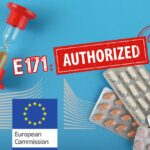
Towards a new nano definition in the future Cosmetics Regulation… yes but which one?
What definition of the term “nanomaterial” in the future Cosmetics Regulation?
The European Regulation on cosmetics, in force since 2009, is currently under revision. One of the objectives of this revision is to improve the text in order to “to safeguard human health and ensure the functioning of the internal market“‘, and this, in coherence with the strategy for sustainability in the field of chemicals published in 2020 and the Zero Pollution Action Plan of the European Union adopted in 2021. The European Commission, which had already organized a written consultation between March and June of this year, brought together stakeholders on June 28 for an exchange workshop (organized both in person in Brussels and online) with the aim of collecting possible contributions and opinions from industry, Member States and NGOs.
The definition of nanomaterials was among the five topics on the agenda, identified as the main issues to be addressed in the future regulation. AVICENN has participated, by videoconference, to the meeting animated by Hans Ingels, head of unit at the Directorate General for Internal Market (DG Grow) of the European Commission, supported by the Ricardo consultancy firm.
Harmonizing definitions: a goal in itself?
One of the major problems of the current Cosmetics Regulation that the current revision proposes to remedy, is the coexistence of different definitions of the term “nanomaterial” in the European texts. The definition of the term “nanomaterial” differs from one sector to another: the definition in the Cosmetics Regulation* differs from the one in the Regulation governing nanomaterials in food, for example, which also differs from the one in the Biocides Regulation.
Chemical manufacturers have long denounced this heterogeneity of definitions, which they accuse of being a source of confusion and complexity: the supply and processing chains are sometimes long, and some manufacturers claim to be at least partially unaware of the end uses of the substances (nano or not) that they sell, in particular to intermediate companies that mix or process them before selling them, in turn, to other companies. The same substance can be used in very different sectors (recently banned in food for example, titanium dioxide is still widely used in paint, medications, cosmetics, etc.). Manufacturers may therefore find it difficult to provide the right information to their customers on the “nano” qualification, or not, of the substances they market, since the criteria for labeling or declaration (in REACH, in r-nano, in the portal of cosmetic notification CPNP, etc.) are not the same from one sector to another (with or without threshold in the particle size distribution, taking into account or not the solubility, etc.).
* As a reminder, the definition in the current Cosmetic Regulations is as follows:
“an intentionally manufactured insoluble or biopersistent material characterized by one or more external dimensions, or internal structure, on a scale of 1 to 100 nm.
Two different options were presented by a consultant from the Ricardo agency:
- the first option would be to replace this definition with the most recent European Commission definition recommendation (itself adopted to replace the previous initial version of 2011) without specific adjustments,
- the second option would be to do the above but with specific adaptations for the cosmetics sector allowing the integration of materials with features in the nanoscale1materials with features in the nanoscale.
Health safety must prevail over legal consistency and certainty
While no details were provided as to the exact terms of the adaptations, AVICENN intervened to express its concerns about Option 1, as it would cause a large number of manufactured nanoparticles to disappear from the authorities’ radar. Indeed, the inclusion of a fixed threshold of 50% would exempt from labeling and notification thousands of cosmetics containing nanoparticles potentially dangerous to consumers. Last February, AVICENN and 14 other NGOs had already questioned the European Commission about the scientific legitimacy of this threshold. AVICENN also expressed its concern about the exclusion of nanocomposites from the new definition recommendation: some brands could use it to escape regulatory constraints on the grounds that their ingredients are complex compounds, in which several substances are present (e.g. titanium dioxide nanoparticles coated with silica or grafted on mica plates).
“The French authorities have used a threshold of 10% so far and people living in other Member States should benefit from the same level of protection. Legal consistency and certainty should not be used to impose the 50% threshold of the new recommendation, nor to exclude nanocomposite materials at the expense of health safety. The latter must prevail.” – AVICENN
The French authorities also defended this position at the meeting. Although the issue concerning the definition of nanomaterials drew little response from stakeholders, three industry federations have expressed their support for harmonization without adaptation of the definition: option 1 is indeed less costly and more advantageous for the cosmetics industry, while option 2 would have the disadvantage, from the point of view of Cosmetics Europe, to make it necessary for the European Scientific Committee on Consumer Safety (SCCS) to re-evaluate many colorants used in cosmetics. Indeed, almost all of them contain a more or less important fraction of nanoparticles – often between 10 and 50%. Note: as the current definition of the Cosmetics Regulation does not include a threshold, these colorants are currently not authorized, even if they are in fact widely present in our cosmetics.
Harmonization of definitions must not be at the expense of consumer safety. The problems associated with the coexistence of different definitions is a problem that ultimately concerns mainly the suppliers of ingredients. Indeed, when the characterization of the substances is done in a complete and adequate way upstream and transmitted correctly to the downstream stakeholders, these can use the definition appropriate to their sector and implement the necessary labeling and notification(s).
What can we expect in the coming months?
Once the impact assessment procedure is completed finalized, the European Commission will submit a draft revision of the Cosmetics Regulation in September to the “Regulatory Review Committee”, before presentation to the Council and Parliament, for adoption in 2024, followed by a transition period of one to two years – i.e. entry into force in 2025-2026.
The suspense remains today on the outcome of this process:
- if option 1 is finally chosen by the Commission, management measures will have to be introduced to minimize health risks for consumers regarding materials “with nanoscale properties” but not covered by the definition recommendation
- if option 2 is chosen, the nature and number of adaptations made are still extremely unclear at this stage, as nothing was presented on June 28.
To be continued…

Upcoming Nano Agenda

- Scientific conference
- 23rd International conference on Advanced Nanomaterials
- From July 23 to July 25, 2025
- Website: www.advanced-nanomaterials-conference.com

- E-learning program: awareness-raising for personnel who come into contact with nanomaterials during research, formulation, production, maintenance, cleaning, upkeep, etc., as well as safety coordinators or engineers, facility managers, heads of laboratories where nanoparticles are handled.
- Organizers: INSTN Grenoble (CEA)
- On the program:
- 1 – Introduction, definition and characteristics of nanomaterials
- 2 – Toxicity of nanomaterials: the state of knowledge
- 3 – Metrology and characterization of nanomaterials
- 4 – Prevention and protection against nanomaterials in the workplace
- 5 – Quiz: assessment of learning outcomes
- The 2-hour course can be viewed for one month from the date of registration.
- Website: https://instn.cea.fr/…risques-lies-aux-nanomateriaux…

- E-learning program: awareness-raising for personnel who come into contact with nanomaterials during research, formulation, production, maintenance, cleaning, upkeep, etc., as well as safety coordinators or engineers, facility managers, heads of laboratories where nanoparticles are handled.
- Organizers: INSTN Grenoble (CEA)
- On the program:
- 1 – Introduction, definition and characteristics of nanomaterials
- 2 – Toxicity of nanomaterials: the state of knowledge
- 3 – Metrology and characterization of nanomaterials
- 4 – Prevention and protection against nanomaterials in the workplace
- 5 – Quiz: assessment of learning outcomes
- The 2-hour course can be viewed for one month from the date of registration.
- Website: https://instn.cea.fr/…risques-lies-aux-nanomateriaux…
Notes and references
- 1materials with features in the nanoscale






